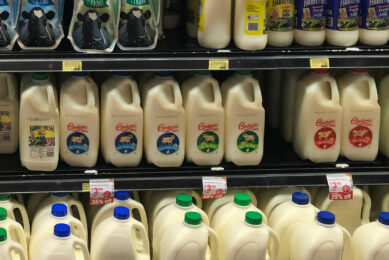Belarusian dairy industry’s profit plummets
![Belarusian dairy is experiencing the same problems as all other industries [of the Belarussian economy]. One of them, a decrease in income from exports to Russia, is associated with the weakening of the Russian rouble. Photo: Canva](https://www.dairyglobal.net/app/uploads/2024/06/feed-cow2_Canva-848x565.jpeg)
The Belarusian dairy industry witnessed a drastic 85% plunge in net profitability in 2023, compared to the previous year, amounting to BRR 144 million (US$27.2 million), as reported by local analyst Felix Mirskiy, citing official data.
The impact of this downturn is reflected on individual company’s performance. The industry comprises 2 dozen dairy factories, Mirskiy said in a post published by a Belarusian news outlet, Belmarket, noting that 9 factories were loss-making in 2023, while in the previous year, all dairy firms were profitable.
For instance, Savushkin Product, the leading Belarusian dairy manufacturer, saw its net profit plummet from BRR 393.8 million (US$118.9 million) in 2022 to BRR 187.5 million (US$56.6 million) in 2023. Similarly, the Slutsk cheese-making plant went from a net profit of BRR 140 million (US$42.2 million) in the previous year to a net loss of BRR 25 million (US$7.5 million) in 2023.
Minsk Dairy Plant was the only Belarussian dairy manufacturer whose profit climbed in 2023, though it was limited to BRR 500,000 (US$151,000), which Mirskiy said was insignificant in the context of the general dairy industry dynamics.
The negative financial performance was recorded despite a rise in output. In 2023, milk production climbed by 6.2% to 8.14 million tonnes.
Belarus exports about 60% of all dairy products produced, and preliminary figures suggest that sales to foreign customers were also on the rise last year. The upward dynamics are projected to continue. In 2024, Belarus targets boosting milk production to 8.7 million tonnes and registering a corresponding increase in the key dairy industry segments.
Perfect storm for dairy industry
Mirskiy said that the Belarusian dairy industry is hit by a mix of factors: “In fact, Belarusian dairy is experiencing the same problems as all other industries [of the Belarussian economy]. One of them – a decrease in income from exports to Russia – is associated with the weakening of the Russian ruble. As a result, sales revenue falls, but costs do not drop.”
On the contrary, the dairy industry sees a surge in operation costs, largely owing to a labour shortage. “To not completely lose staff, salaries have to be increased despite falling profits,” Mirskiy said. But the key challenge, Mirskiy added, is state price caps. “Under normal circumstances, producers could compensate for costs by raising prices. However, government regulation does not allow them to do this. Over the past year, price regulation has reduced the profitability of retail trade to almost zero. Judging by the financial results of the dairy industry, dairy producers are next in line,” Mirskiy said.
Join 13,000+ subscribers
Subscribe to our newsletter to stay updated about all the need-to-know content in the dairy sector, two times a week.










